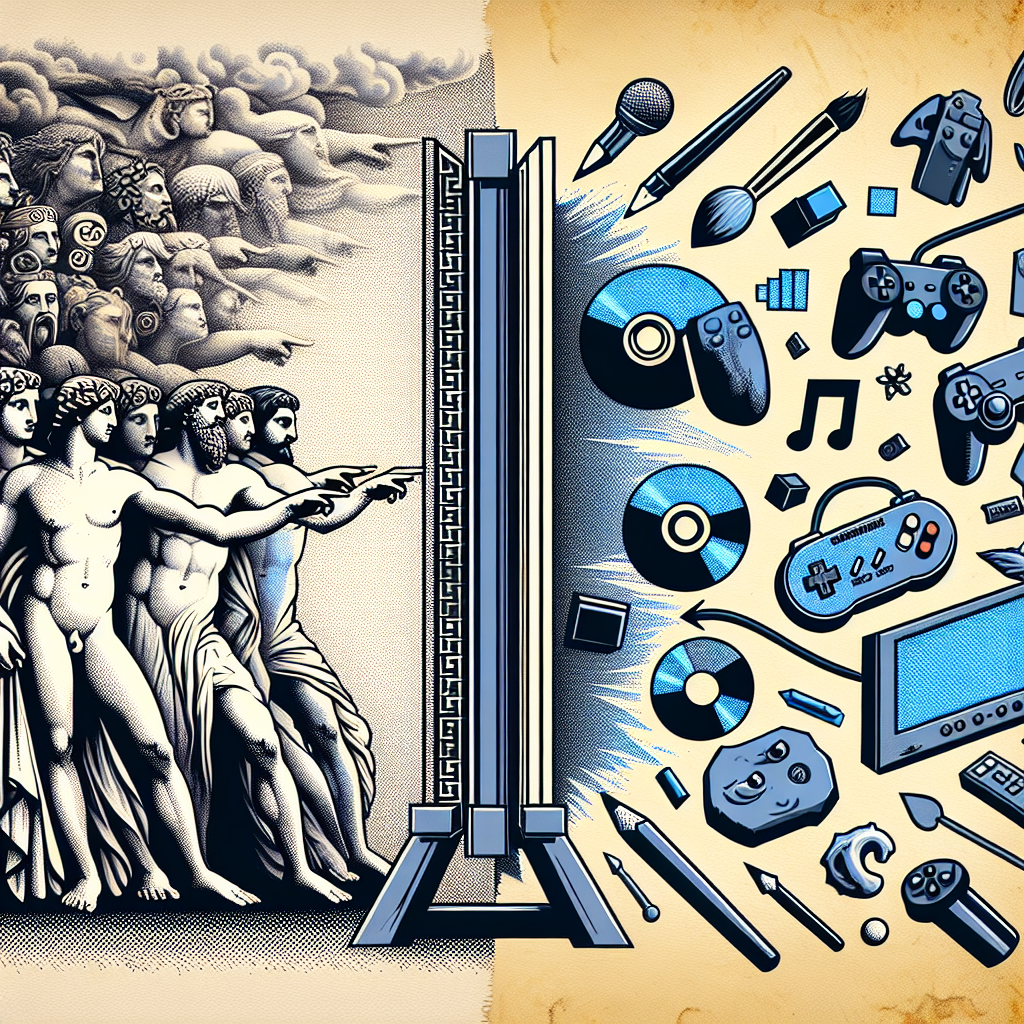From Canvas to Console: Exploring Innovative Fan Art Themes in Gaming
In the vibrant world of video games, creativity knows no bounds. As an interactive medium, gaming not only engages players but also inspires countless artists to transform their passion into striking fan art. From traditional canvases to the digital realm of consoles and graphic design software, artists are reinterpreting beloved games in innovative and imaginative ways. This article delves into the evolution of fan art in gaming, highlighting inspiring themes that transcend traditional boundaries and reflect popular culture’s evolving landscape.
The Rise of Fan Art
Fan art has been around as long as fandoms themselves, but its proliferation has been rapidly accelerated by the digital age. Platforms like Instagram, DeviantArt, and Reddit have made it easier for fans to share their work, connect with one another, and cultivate vibrant communities centered around their favorite franchises. In a world where video games often feature lush narratives, intricate characters, and expansive lore, it’s no surprise that fans feel compelled to contribute their unique interpretations.
Bridging Genres and Styles
One of the most exciting facets of fan art in gaming is the blending of genres and artistic styles. Artists often draw inspiration from the games they love, incorporating elements from different genres. For example, indie games like "Hollow Knight" and "Celeste" have inspired scenes painted in an impressionist style, emphasizing emotive color palettes and brushwork to capture the emotional core of the games. Meanwhile, other artists embrace realism, rendering characters with breathtaking detail that could easily fit into concept art for a franchise’s next installment.
In addition to blending styles, fan art often transcends the medium. The rise of pixel art nostalgia has led to works that evoke the aesthetic of 80s and 90s games while incorporating contemporary subjects. Imagine a scene depicting a classic arcade hero, not simply battling monsters in a pixelated world but navigating a labyrinthine reality inspired by current socio-political themes. This intersection of old and new is a testament to the growth of a creator’s identity and the relevance of past influences in a rapidly evolving art scene.
Emotional Resonance and Themes
At its core, fan art is often driven by emotion—artists capture experiences, relationships, and narratives that resonate uniquely with them. Themes of nostalgia, identity, and community are central to much of today’s fan art.
Nostalgia and Reimagination
Games like “The Legend of Zelda” and “Final Fantasy” are iconic for their indelible impact on the industry, influencing generations of gamers and artists alike. Artists often explore these franchises through the lens of nostalgia, reimagining classic scenes or characters in ways that evoke a sense of longing for the past. However, this nostalgia is not stagnant; it’s dynamic, evolving with contemporary interpretations. Imagine a reimagining of Link not just as the hero of Hyrule but as an advocate for environmental sustainability in a modern setting, confronting pollution in a futuristic landscape—staying true to the lore while addressing a current global issue.
Identity and Representation
Another significant theme emerging in fan art is identity. As gaming culture becomes increasingly diverse, artists are taking a stand, creating works that represent underrepresented voices and themes. They’re redefining iconic characters or crafting entirely new narratives that center around diverse characters, incorporating elements of their own heritage and experiences. This trend emphasizes the importance of representation in gaming, allowing marginalized communities to see themselves reflected in the stories they love.
The Collaborative Nature of the Internet
Perhaps one of the most extraordinary aspects of fan art is its collaborative nature. Online platforms enable conversations among creators, allowing them to inspire each other, share techniques, and even co-create projects. Artists might collectively contribute to a themed project, such as “Women in Gaming,” showcasing iconic female characters across various franchises and their impact on storytelling in games. This cooperation fosters a sense of community, pushing the boundaries of individual creativity while celebrating the richness of collaborative effort.
Conclusion: A Canvas Without Limits
The journey from canvas to console symbolizes a broader transition in art and gaming—a convergence driven by technology, community, and innovation. Fan art in gaming has flourished, bringing together diverse themes and styles that resonate on both personal and cultural levels.
As technology continues to evolve, enabling new forms of creation—such as augmented reality (AR) and virtual reality (VR)—the potential for innovative fan art will only expand. Artists will continue to explore, reinterpret, and immortalize the immersive worlds we love, crafting pieces that inspire, provoke thought, and celebrate the ever-evolving relationship between gamers and their art.
In this vibrant exchange of ideas and creativity, the canvas that once confined artists is becoming a digital landscape where imagination reigns, illustrating the endless possibilities of interpretation in the world of gaming. Whether through traditional painting, digital illustrations, or even three-dimensional creations, fan art is not just a tribute; it’s an authentic expression of community, culture, and the shared love for gaming.




